Noticing white fragility in the ritual of the museum-visit
Being a white, middle-class and able-bodied person of the global minoritysee footnote 4, I had to question the speed and ways with which I appropriated cosmologies of the global majority during the 100-day exhibition of documenta fifteen in Kassel (Germany), which was curated by ruangrupa – a collective of collectives based in Jakarta/Indonesia. This form of self-reflexive questioning (a.k.a. critical whiteness) is necessary in order to interrupt the “[...] undesirable possibility of prolonging occidentalist practices of exhibiting [and mediating] the Other.” (Marchart, 2022, p. 65). The assumed otherness regarding the artistic practices of both the artists and the curatorial team of documenta fifteen by the German media during the lead-up and throughout the duration of the exhibition, both ruptured and reproduced an expectation of difference.
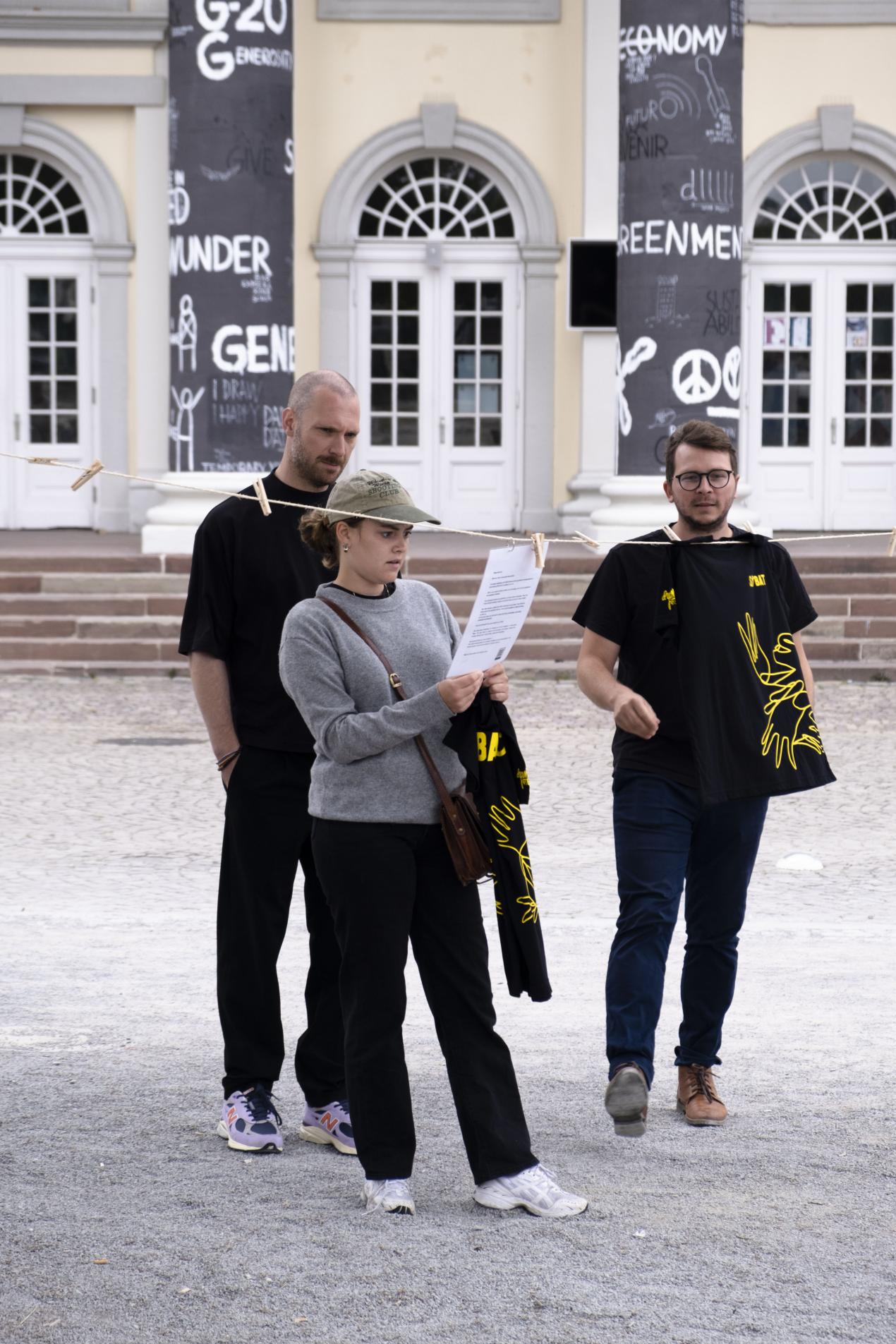
Fig. 1: Documentation of an organized-sobat performance in front of the Fridericianum. (2022) © Theseas Efstathopoulos
The working clothes of the art mediators (sobat-sobat) were hung on clotheslines shortly before the opening hours of the exhibition. Between the T-shirts there was a short text to read that described the current working conditions of the sobat-sobat and at the same time invited the visitors to put on the T-shirts and participate in the exhibition in their own way. See: Johanna Brummack, Redesigning workwear as resistance wear, in "Ever been friend-zoned by an institution?"
During my work in the exhibition, as a sobatSee Glossary documenta fifteen 2022 https://documenta-fifteen.de/glossar/ [10.10.2023], I verbally expressed my discomfort and difficulty in being invited to (re-)position my whiteness in relation to the artworks, artists and cosmologies of the exhibition to the participants of my Walks & StoriesSee Glossary documenta fifteen 2022 https://documenta-fifteen.de/glossar/ [10.10.2023] (hereafter W&S). By repetitively “opening up” to the participants of my W&S, I got to know that many of the visitors shared my feelings of white fragility. White fragility is in my opinion a fundamental threshold of critical whiteness, both of which are conditions and byproducts of the ongoing process of decolonisationI would like to thank Molemo Moiloa and Nare Mokgotho, from the artist collective MADEYOULOOK, for informing me with these explicit terms to speak of socio-political geographies from an anti-colonial perspective. The terms “global south” and "global north” have in recent years, for good reason, overthrown the narrative of so-called “first” “second” and “third” world countries. The “global” on the one hand, unlike the ranking of first, second and third, interrupts the linguistics of colonisation and its production of otherness, but it also assumes a symmetry between the two poles (south and north). In our post- and neo-colonial globe this is not the case. “North America constitutes about 5 percent of the world’s population; Europe is about twice that. Yet you speak on behalf of all of us who never chose you to do so and who happen to be the majority of humankind. Based on the rhetoric of democracy, we should have a significant say in the way this planet operates—which, of course, is not the case.” (Shahidul Alam on the Majority World, n.d) The quantitative framing of minorities and majorities recognizes and uses this asymmetry as a way to disillusion (Ent-täuschen) the assumed hegemony of a minority of this globe (global north) over a majority of colonised subjects (global south)..
In the case of documenta fifteen (hereafter d15), they became noticeable in the troubling of the most “disciplined” documenta visitors; the people of the global minority whose knowledge, belief and value systems were not reaffirmed by this exhibition. Critical whiteness, in the context of my art-mediation as a sobat, meant staying with these troubles (Haraway, 2016) by entangling and disentangling the expectations and assumptions that I (and participants of my W&S) placed upon Others. Staying with the troubles of d15 as a sobat-sobat also meant encouraging and withstanding the ruptures of the hegemonic meaning-making of documenta gGmbH and the effects these ruptures had on its disciplined subjects. I would like to give this transfigurative process a name: Ent-täuschung.
Täuschung in German means illusion and often has the negative connotation of deception. Enttäuschung on the other hand, is the negation of deception and means disenchantment and disillusion. Ent-täuschung, in the context of cultural mediation, can describe a “creative moment” in which a subject is “forced” to think and reevaluate a situation because an “object of encounter” has disrupted their knowledge systems – their narrative (O´Sullivan, 2006, p. 1).
With this article I would like to focus on specific moments of rupture, in which expectations were not fulfilled. I am not loading the breach of expectations with positive or negative connotations, but rather pointing to the omnipresent Ent-täuschung of a predominantly German public during d15. Ent-täuschung as a social phenomena occurs in and affects different (racialized) groups in an asymmetrical manner. Based on my experience, white people experienced Ent-täuschung during d15 more than others. BIPOC people, being conditioned to disappointing and disenchanting neo-colonial narratives, often had more nuanced experiences.
In the collaborative turn of d15, the inclusion of marginalised positions (based on solidarity and 3 degrees of separation“First, we [ruangrupa] invited documenta to become our ecosystem at the beginning of our journey. Once we had its willingness to embark on this journey with us, we extended invitations: first, to the people who we imagined could work with us closely from the get-go—they are what we call the artistic team. Next, we invited practices, initiatives, and collectives that we want to learn from. We announced 14 of them as “lumbung inter-lokal” to the public. Right after that, and continuously learning from the processes we had gone through, we thought about other collaborators that would enrich the celebration we understood as documenta 15 — artists, educators, designers, economists, radio stations, the list goes on. (ruangrupa & Sternfeld, 2021, p. 76) The 14 Lumbung Members can be considered as having a “first degree” of separation since they were directly connected to ruangrupa through previous collaborations or because ruangrupa reached out to them directly. The additional 54 exhibiting Lumbung Artists can be considered as having a “second degree of separation” as they were consecutively invited by the Lumbung Members, and they in turn invited their direct associates, collaborators and families to join the ride (third degree of separation). Together they made up the 1500 credited artists of the exhibition. "It seems as if the curatorial collective ruangrupa tried to bring together groups and initiatives at the art-community-politics nexus similar to ruangrupa itself [...] It is thus only logical that Gudskul, the self-organised space run by ruangrupa and two other groups — Serrum and Grafis Huru Hara — in Jakarta, is also a participating lumbung member. (Marchart, 2022, p. 51)) was interpreted as a sign of boycotting“In the case of documenta fifteen there was never any explicit statement that invitation policies would follow the line of BDS. But nonetheless, and despite its integrative posture and joyous communality, not a single Jewish Israeli artist was invited. It seems there is “lumbung” for all kinds of international groups and individual artists, as well as for the inhabitants of Kassel, but not for Jews from Israel. Everyone seems to be invited to communal “sharing,” based on the ruangrupa principle of generosity, but Jews from Israel had never been invited to share. It takes a lot of willful naivité to believe that this is for the same circumstantial reasons why Swiss artists had not been invited.”(Marchart, 2022, p. 119) certain hegemonic and Eurocentric narratives.
The German public’s Ent-täuschung regarding ruangrupa’s and documenta gGmbH’s response to the reproduction of anti-semitic narratives in the public (ex. Taring Padi titled People’s Justice “The 8 x 12 meter banner People’s Justice was produced in Yogyakarta, Indonesia, in 2002, by many members of our collective [Taring Padi]. The banner was born out of our struggles of living under Suharto’s military dictatorship, where violence, exploitation and censorship were a daily reality. Like all of our artwork, the banner attempts to expose the complex power relationships that are at play behind these injustices and the erasure of public memory surrounding the Indonesian genocide in 1965, where more than 500,000 people were murdered.” (suedkamp, 2022)) has been discussed to a great extent in statementsTaring Padi’s statement issued on 24.06.2022 https://documenta-fifteen.de/en/news/statement-by-taring-padi-on-dismantling-peoples-justice/ The statement from the Central Council of Jews in Germany (Zentralrat der Juden in Deutschland) issued on 28.07.2022 https://www.zentralratderjuden.de/aktuelle-meldung/artikel/news/presseerklaerung-zur-documenta/ and the following statement issued on 12.09.2022 https://www.zentralratderjuden.de/aktuelle-meldung/presserklaerung-zur-erklaerung-des-expertengremiums-der-documenta/, publications See Oliver Marchart`s chapter Criticism of Israel as a Spontaneous Ideology of the Art Field (Excursus) (pp. 99-118) in Hegemony Machines documenta X to fifteen and the Politics of Biennalization, 2022 , state issued reports from so called impartial supervisory boards (Aufsichtsrat) The Final Report from the “Committee for the scientific support of documenta fifteen” (Orig. Abschlussbericht von der Gremium zur fachwissenschaftlichen Begleitung der documenta fifteen) https://www.documenta.de/files/230202_Abschlussbericht.pdf and symposiumsSymposium: Controversy over documenta fifteen (Orig. Symposium: Kontroverse documenta fifteen) https://hfbk-hamburg.de/de/stories/symposium-kontroverse-documenta-fifteen/ took place five months after documenta fifteen at the Academy of Arts of Hamburg where Reza Afisina and Iswanto Hartono (members of ruangrupa) were currently active as guest professors. The keynote speech by Natan Sznaider (professor of Sociology at the Academic College of Tel Aviv-Yaffo) had the intention to open the two-day symposium by positioning “tolerance of ambiguity” (orig. Ambiguitätstoleranz) as a necessity for a self reflexive (and post-colonial) approach when dealing with the controversies of documenta fifteen. Throughout the symposium, and especially when members of ruangrupa and/or Taring Padi where part of the panel discussions, large parts of the (middle-class, white audience) interrupted the conversations by yelling out at the participants; first because they were not apologising and then because they weren't apologising “properly”. In my opinion the disrespectful and emotive language of these people in the audience exposed an intolerance for ambiguity and in doing so provided me with another lived experience of Enttäuschung. The people in the audience were Enttäuscht because they were expecting an apology from members of ruangrupa and/or Taring Padi on their own terms. (See: https://hfbk-hamburg.de/de/aktuelles/mitschnitt-kenyote-von-prof-natan-sznaider/ for Natan Sznaider’s keynote lecture).
This essay hopes to both continue and disrupt these existing macro-historical and socio-political narratives by reflecting on real encounters with actual people –in situ– as a sobat.
Whilst working (and practically living) in the exhibition, I noticed that recurring feelings of Ent-täuschung (dis-illusionment / dis-appointment) regarding the contents, participants and management of the exhibition were present alongside feelings of being enchanted, enabled and encouraged by those same contents, participants and management. In the case of my German-speaking W&S, I noticed that the participants Ent-täuschung with documenta gGmbh and ruangrupa’s handling of the supposed anti-semetic artworks in the exhibition was overshadowing their own internalised Ent-täuschung in regards to their embodied and embedded experience of the exhibition.
My theory of Ent-täuschung solidified when I discovered Luise Reitstätter’s thesis, which proposes that visitors of exhibitions have a disciplined desire to approach an exhibition competently and seriously and yet only feel like “good visitors” when they are able to grasp (i.e consume) the exhibition as a whole (Reitstätter, 2015, p. 150). The very specific dissatisfaction of visitors of exhibitions stems from an illusion (Täuschung) that a whole exists, and that this whole can be (and should be) attained through intellectual work.
ruangrupa’s curatorial approach of lumbung allowed Black people, Indigenous people and People of Colour to offer counter-narratives as “[...] means of exposure, communication and criticism, but also self-definition and self-determination.”Micossé-Aikins in (Arndt & Ofuatey-Alazard, 2011, p. 420) (Orig.:”People of Color [haben], seitdem es Rassismus gibt, Kunst als widerständiges Mittel der Aufdeckung, Kommunikation und Kritik, aber auch der Selbstdefinition und -bestimmung genutzt.”) It seems to me that not being able to understand or feel represented in these narratives and cosmologies was an Ent-täuschung for a lot of white people. This is due to the fact that colonial projects (such as archives, collections and exhibitions) have reproduced the narrative that understanding and evaluating the Other from an outside perspective is possible, and to some extent even necessary. Carmen Mörsch’s detailed summary on the creation of otherness in the occidental arts and art-mediation does this topic justice See: Mörsch, Die Bildung der A_n_d_e_r_e_n durch Kunst: Eine postkoloniale und feministische historische Kartierung der Kunstvermittlung, 2019
I would like to situate Ent-täuschung as one methodology for an anti-colonial approach to the mediation of artistic practices and cosmologies of the global majority from an institutionalised (and white) positionality. It is important to note that Ent-täuschung as a method does not work well on its own. It is to be understood as one of many approaches that transform the service-providing-art-mediator into a critical friendSee: Sarah Marcinkowski’s essay Critical Friends in the self-organised publication of the sobat-sobat titled: Ever been friend-zoned by an institution? (2022) that cares. In recollecting my W&S for this article, I realised that my most well preserved memories from my W&S are not moments in which I internally or externally, with or without the participants, experienced a conflict of values, interests or opinions, but rather moments in which common sense was ruptured. What remains are the quiet confrontations I experienced the quiet confrontations between ‘the art’ and ‘the public’ as a productive development and an emancipated intentionality of the artistic practices from the global majority. Oppositional practices are loud enough to have to be outside the institution. They are anti-colonial by highlighting ‘the colonised’ and ‘the colonisers’ in the favour of retribution and restitution of those still being extorted and discriminated against. Such an opposition, although it assumes to be outside the realm of the institution, uses the institution (the colonisers) as a central point of reference. In the German context, the public is accustomed to a post-colonial discourse based on Vergangenheitsbewältigung (trans. coming to terms with the past) (Weiner, 2017, p. 14), which reproduces a colonial perspective as a point of access and aims at rehabilitating the coloniser – making them “better”. Non-oppositional practices are often para-institutional and quiet. They take advantage of the cultural and physical capital of an institution and use it for their own cause. This quiet confrontation is a form of Ent-täuschung and it occurs beside the sensationalism of spectacles. – moments of Ent-täuschung “[...] over what is given and about the frame within which we see something as given.” (Corcoran & Rancière, 2010, p. 69)
Counter-rituals at documenta fifteen: make friends and art (and not sensationalism)
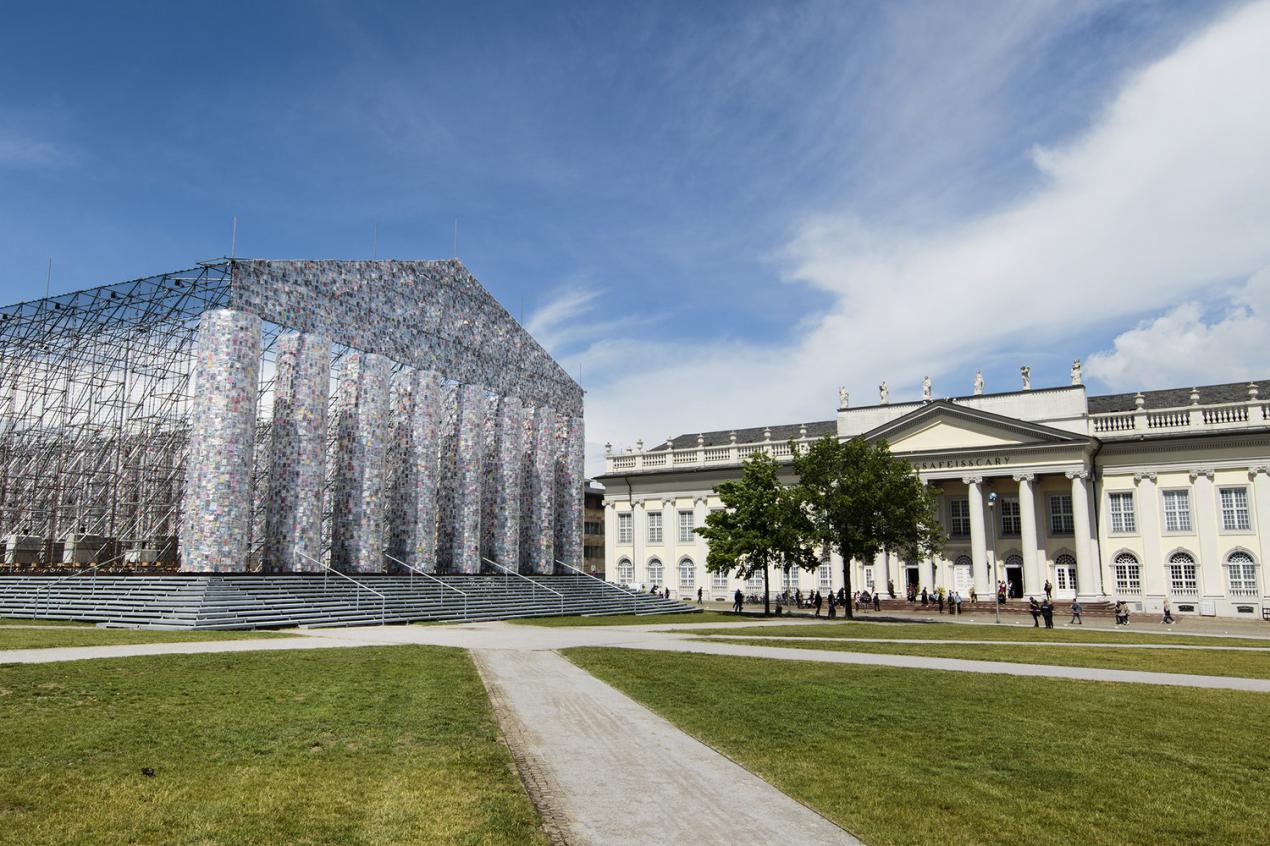
Fig. 2: “The Parthenon of Books” in front of the Fridericianum during documenta 14, © I DO ART Agency, Source: https://www.idoart.dk/kalender/documenta-kassel, Accessed 03.05.2023
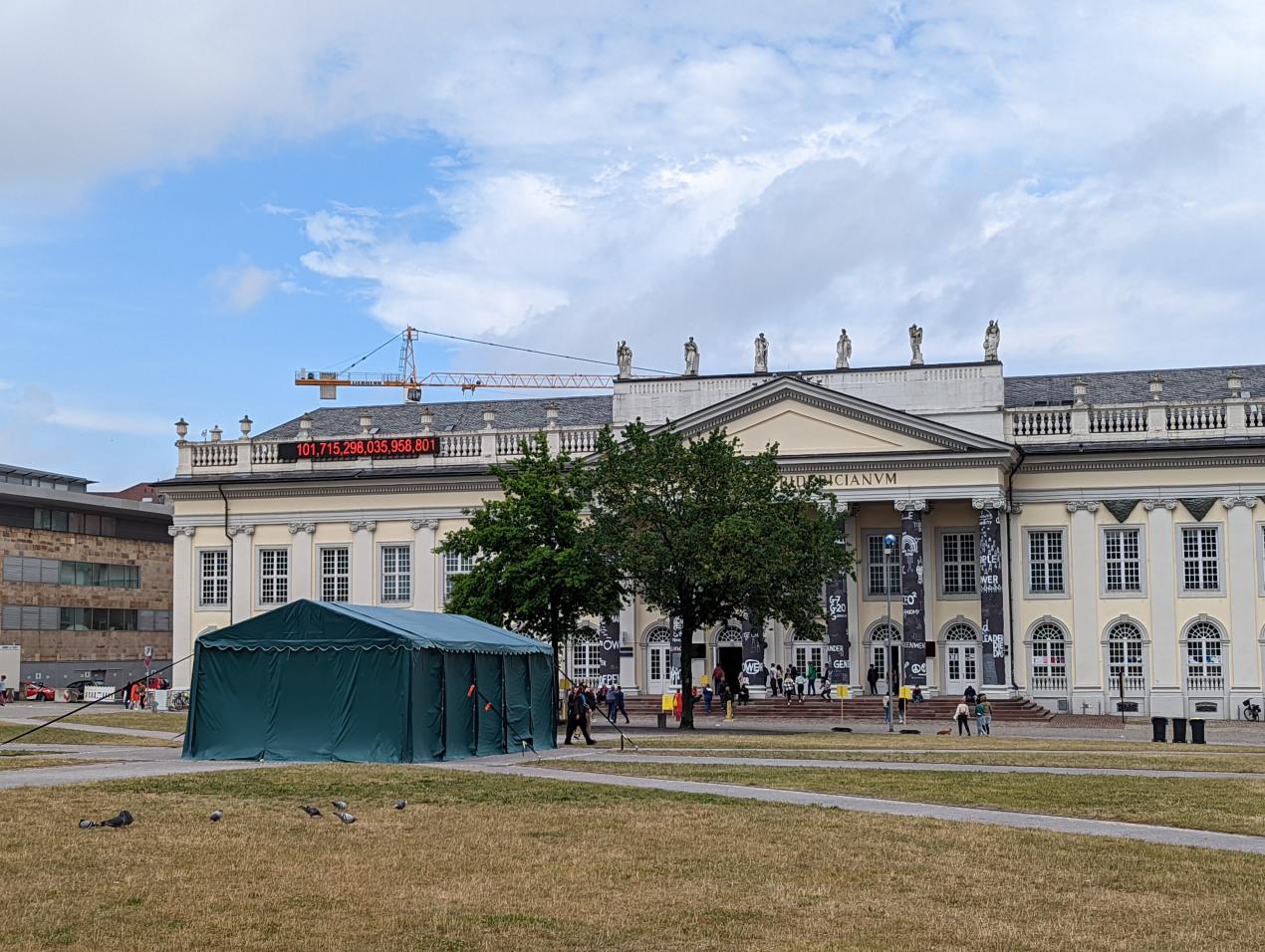
Fig. 3: The “Aboriginal Embassy” in front of the Fridericianum during documenta fifteen, © documenta fifteen, Source: https://www.uapcompany.com/projects/richard-bell, Accessed 03.05.2023
The realisation that Ent-täuschung was related to critical whiteness started with several seemingly harmless comments from participants of my W&S in front of the Embassy Richard Bell’s Embassy (2013 - ongoing) (Fig. 5) was celebrating its 50th Anniversary during documenta fifteen. It began in 1972, when four Indigenous men set up a beach umbrella opposite Parliament House in Canberra, Australia, protesting the government's approach to indigenous land rights. at d15:
“It's a shame. It was so nice when we had the Parthenon of Books Originally El Partenón de libro, exhibited in a busy street of Buenos Aires (Marta Minujín, n.d.). It was a replica of the Athenian Parthenon and was made out of 25,000 books that the Argentine military had forbidden and locked up during its dictatorship (1976-83). For the re-make of this sculpture for documenta 14 in 2017, an international book donation campaign was carried out and following their use in the Parthenon a large amount of these forbidden books were then redistributed to the public during the last weeks of the exhibition (The Parthenon of Books, n.d.). The books were packaged individually in transparent air-tight bags and covered the exterior of a 1:1 replica of the Athenian Parthenon made out of scaffolding. (Fig. 2) (Fig. 2), you know [...] we could meet our friends here”.
It's a hot midday in late June, a disorientated group of eight late-aged-German-folk, finally find their meeting point and join me with the rest of the group that is practising small talk, between Europe's first public museum Fridericianum and Richard Bell’s Aboriginal Embassy (Fig. 4). We are sixteen people, six of whom have visited every quinquennial documenta exhibition since 1964 and two others who were present at the first documenta in 1955. The rest are sporadic visitors who were intrigued by the scandalisation of the exhibition in the German media and wanted to have a chance to make their own opinion. All but me have come from Kassel or from neighbouring towns.
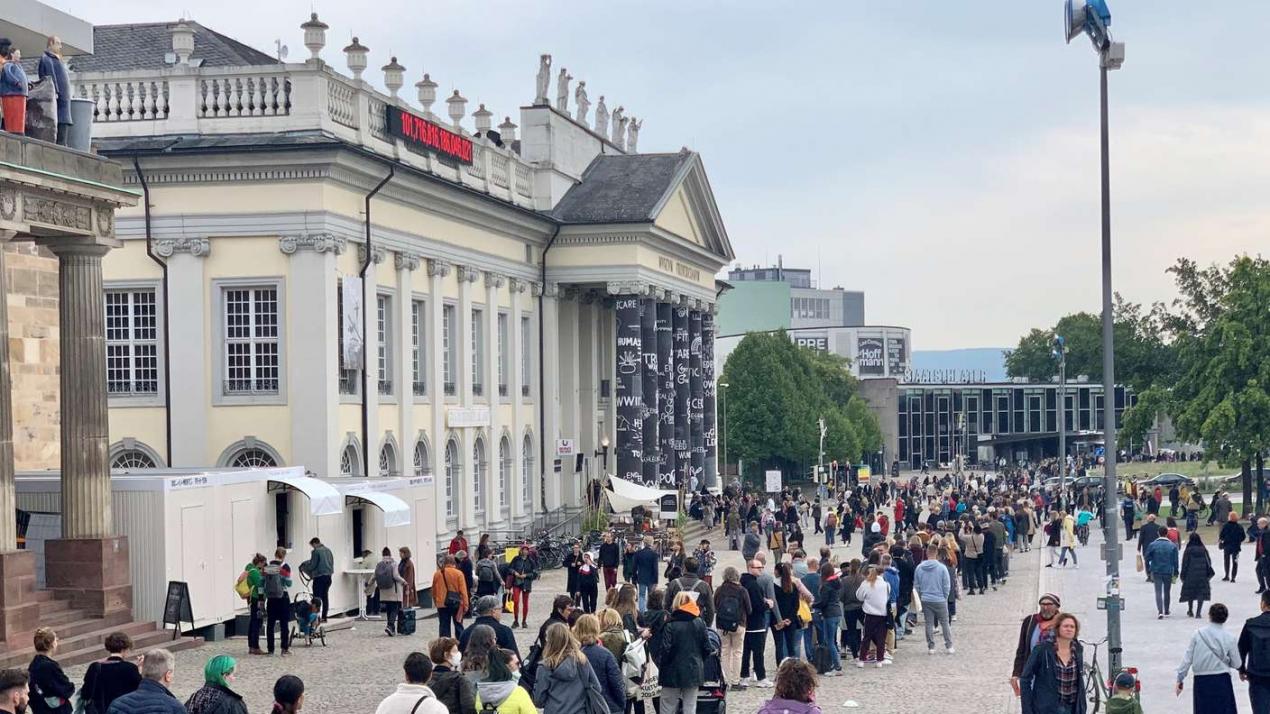
Fig. 4: Visitors queuing in front of the Fridericianum during documenta fifteen, 2022, © Axel Schwarz, Source: https://www.hna.de/kultur/documenta/15-zieht-positive-bilanz-91812717.html, Accessed: 03.05.2023
“Where do you really come from?” one person asks me. I repeat “Pankow” The text of Hansel Sato Performing Essentialismus auf der documenta 12, written from the perspective of a not-white-passing art-mediator giving guided-tours, points out that the assumed origin of the art-mediator has a large effect on how and which artworks will be positively or negatively perceived by the participants of the guided tour. I´ve lived in the larger Pankow area (Prenzlauer Berg, Weißensee) for 8 years. Pankow is the second-largest district of Berlin and was sometimes considered by the Allied Forces as the capital of the German Democratic Republic (Die Geschichte Pankows, 2023). Me choosing Pankow as my origin, instead of my birthplace (Limassol, Cyprus), was a conscious decision to disturb the essentialization of my person due to my appearance and accent by the W&S groups. and let the person sit with the discomfort of not-really-knowing where I really come from. For them I am an Other;
My accent, my grammatical mistakes, my appearance (crop-top, skirt, beard and blue mohawk) differs from their own.
I mention to the group that it's my first documenta and that I would be grateful if the “experienced participants” would share their stories during the walk and in doing so help me get the bigger picture which they could offer due to having attended multiple documentas. Bearing in mind that this is not their first guided tour at a documenta exhibition, I begin our W&S with the curatorial decisions that stand out for me. I point to the faux-hellenistic Fridericianum with Dan Perjovschi’s blacked-out-and-scribbled columns (Fig. 6) and tell them a story about how the curators, the collective of collectives –ruangrupa– knew from the beginning what they wanted to do with this museum – they wanted to turn it into a school. I bring up previous curators who had also tried to change the habit of the public in considering the Fridericianum as the centerpiece of documenta exhibitions by decentralising the exhibition and spreading key art-works around the whole city and even to the periphery of Kassel. I tell my group that ruangrupa wasn’t arrogant enough to assume that they could radically change the public's habits with their curatorial decisions.
Instead ruangrupa realised that there are specific rituals at documenta and they chose to work with them, not against them (Marchart, 2022, pp. 34–35) “[...][I]n a perhaps somewhat more anarchistic spirit, which perhaps applies to the makers of documenta fifteen, one could have destroyed the legitimising power of the institution and even let documenta fail, but in so doing one would have deprived oneself of an apparatus endowed with the power of re-canonization. Or one could have ignored the center of the exhibition complex from the beginning, but then one would have surrendered it to the hegemonic culture of dominance. Neither option would have been a hegemonic—or counter-hegemonic— strategy, but simply an expression of political capitulation. Hegemony theory teaches that one must not be afraid of occupying the center, even if one allows oneself the luxury of ultimately wanting to oppose all centers.(Marchart, 2022, pp. 34–35). My group confirms the thesis of the ritual by saying that they “always first visit the Fridericianum before seeing the rest of the documenta”. The museum-visit-as-ritual is deeply rooted for most documenta visitors, as Marilia Loureiro pointed out in the public talk Here is a link to the recording of the talk with Viviane Tabach and myself during d15 (Kick-Start Of The Day, 2022). However, feeling comfortable and represented in museums and knowing how to behave and how not to behave within them is definitely not universal.
I explained to the group that instead of urging people to go outside the museum, ruangrupa invited the outsiders into the museum. I continue by openly acknowledging the ambiguity of para-institutional structures in d15, and begin to notice that the collective Ent-täuschung of our expectations is actually bringing me and the group closer together. In a very friendly manner, I show that I am not interested in defending the artworks nor attacking the institution, nor educating In the many cases where participants used inappropriate or discriminatory language I would repeat their sentence back to them in an appropriate manner and ask if that's what they meant? By doing so I tried not to let myself become an educator nor reproduce the opinion by giving more attention to it than it actually deserved. or relieving its participants. In doing so, I also demonstrate trust to my group, which makes it easier for the group to return that trust (Frick, 2021, p. 54). During my fifteen minute introduction to my W&S, I tried to make it clear that we were not going to experience the whole of documenta, not even a significant part of it, and that my Stories focused on some specific works with which we as a group could encounter (and hopefully practise) the lumbung values In short: Humour, Generosity, Independence, Transparency, Sufficiency and Regeneration.
I invite the person that was previously venting her opinion to me about documenta 14’s “centrepiece” The Parthenon of Books and the current de-centering piece –the Embassy– to share her Ent-täuschung with the rest of the group.
The group shows consent by quietly nodding their heads and staring at the half-empty tent. They seem preoccupied with the Ent-täuschung that documenta’s art-mediators are (again) offering methods and stories instead of service-oriented informative “tours”For a rather “negative” participant review of the Walks in documenta 14 see: https://www.spiegel.de/spiegel/ein-spaziergang-ueber-die-missratene-documenta-14-in-kassel-a-1159482.html and for a “positive” participant review of the Walks & Stories in documenta fifteen see: https://www.hna.de/kultur/documenta/documenta-15-walks-stories-setzen-auf-interaktion-und-gespraeche-91693485.html. Visitors of “world-exhibitions” have become used to eye-catching, large-scale and resource-heavy conceptual art that has bold (and often so called universal) statement(s). I realised that the participants of my W&S were craving a flagship artwork. Something that they can use as a meeting point, something that is easy to make an impressive photograph out of or with, something with which they can feel competent in having understood and assimilated; they wanted the Parthenon back.
I believe that beyond the apparent instragramability of The Parthenon of Books (2017), the overall positive reception of the work in Germany was partly influenced by existing points of reference and relation. The Parthenon of Books stood in clear opposition towards dictatorship and censorship. The enduring memories of book burnings during the Third Reich and Germany’s political and linguistic relation to Greece, made most obvious in the working title of documenta 14 “Learning from Athens”, made it easy for visitors to consume this artwork.
Richard Bell´s edition of the Embassy (Fig. 3) during d15 which stood before us consisted of a common green outdoor pavilion; a synthetic tent equipped with a medium-sized screen playing a sequence of Bell's satiric films alongside archival footage from the land rights movement of Aboriginal Australians from the last 50 years. In front of the screen stood 30 seemingly insignificant schoolchairs, a PA System for the irregular talks (for which there was no visible program in the space) and several medium-sized protest shields with phrases from the land rights movements such as: “WE WANT LAND, NOT HANDOUTS” and “WHITE INVADERS YOU ARE LIVING ON STOLEN LANDS”. Unlike the white museum across it, this tent did not have any windows and the visibility of its contents was dependent on the weather and opening hours. Moreover, the Embassy was free of charge and did not have any (visible) designated invigilators. Like many Third-spacesThird spaces are (amongst other things) social environments that are not home (first space) or work (second space), but rather public gathering places where people can come together to engage in community activities and build relationships. These spaces are typically designed to be welcoming and inclusive, and can take many different forms, such as coffee shops, parks, libraries, community centers, corridors, online forums, fallow land and many more. in d15, it was an installation that could have included multiple artworks, but because they were not individually labelled as such they appeared to the general public as props. Because of the harsh and unexpected weather phenomena of the German summer and the tents accessibility and response-ability, it became a place for gathering and taking shelter. At irregular intervals, talks with artists and activists with and without the moderation of Richard Bell took place.
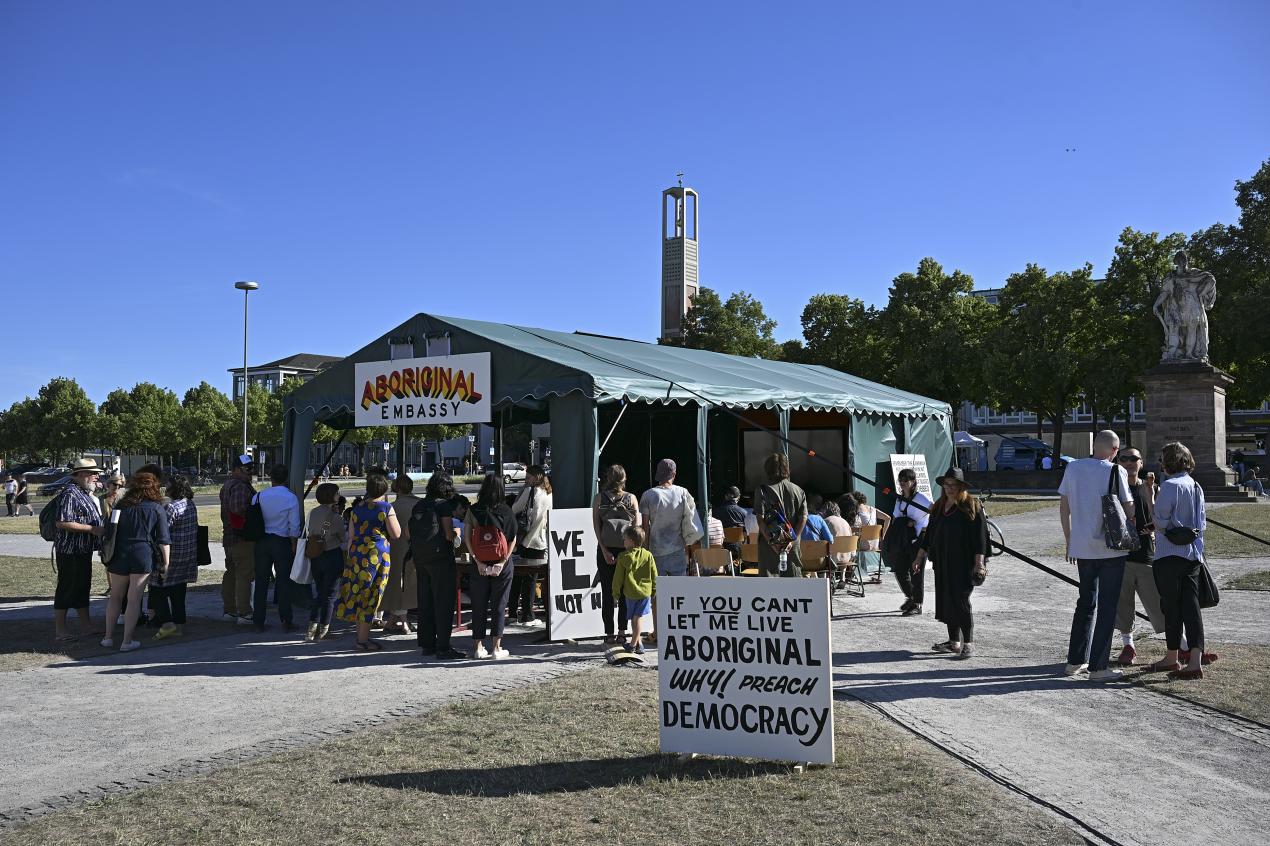
Fig. 5: Richard Bell, Embassy (2013 - on-going), Talk between Richard Bell, Nadir Bahmouch (LE 18) und Marwa Arsanios, Friedrichsplatz, Kassel, 16. Juni 2022, © Nils Klinger, Source: https://documenta-fifteen.de/downloadbereich-lumbung-programm/, Accessed: 03.05.2023
This tent stood across from the Fridericianum in a quiet yet noisy manner. As Marilia Loureiro in the Kickstart of The DayKick-Start of the Day was “[...] supposed to be a kind of breakfast television for documenta visitors. The idea for the format came about before the documenta in cooperation with the Sparkassen-Finanzgruppe. The latter had co-financed the welcome zone where the event takes place.” (Orig. “Es soll eine Art Frühstücksfernsehen für die Besucher der documenta sein. Die Idee zu dem Format entstand vor der documenta in Zusammenarbeit mit der Sparkassen-Finanzgruppe. Diese habe die Willkommenszone mitfinanziert, an der die Veranstaltung stattfindet.”) (Interviewreihe „Kick - start of the day“ findet jeden Vormittag im Ruruhaus statt, 2022). For more information see (Efstathopoulos in Tabach & Efstathopoulos (Ed.), 2022, pp. 62–64) with Viviane Tabach pointed out; the museum visit for Europeans is equal to that of a ritual. There is a consensus on how to behave and how not to behave in a museum (Duncan, 1995). The museum visit is a “symbolic” ritual, one that creates value and identification for its practitioner. “And the tent is quite the opposite in some sense. When you get in the tent, you don't really know what's happening.” (Loureiro in Kick-Start Of The Day, 2022). Tents, unlike most museums, are misleading because their purpose is rarely visible from the outside. With the exception of activist and protest movements During documenta 13 in 2017, the “Occupy” movement set up multiple tents and squatted on the exact same place that the Embassy tent stood. Carolyn Christov-Bakargiev, the curator of the 13th documenta, allowed the occupation yet did not officially include it in the exhibition., people of the global minority currently experience tents predominantly at music festivals, street-fairs and in the documentation of refugee camps in countries of the world majority and at Europe's southern borders. As Loureiro pointed out, not knowing what is happening on the inside of something before going into it and being part of it scares specific viewers who are used to a hegemonic position within the (museum's) ritual. The possibility of losing one's hegemony in the public sphere–of being touched back by the work or by Other people in it (ibid.) – unsettled the participants of my W&S in a subversive way.
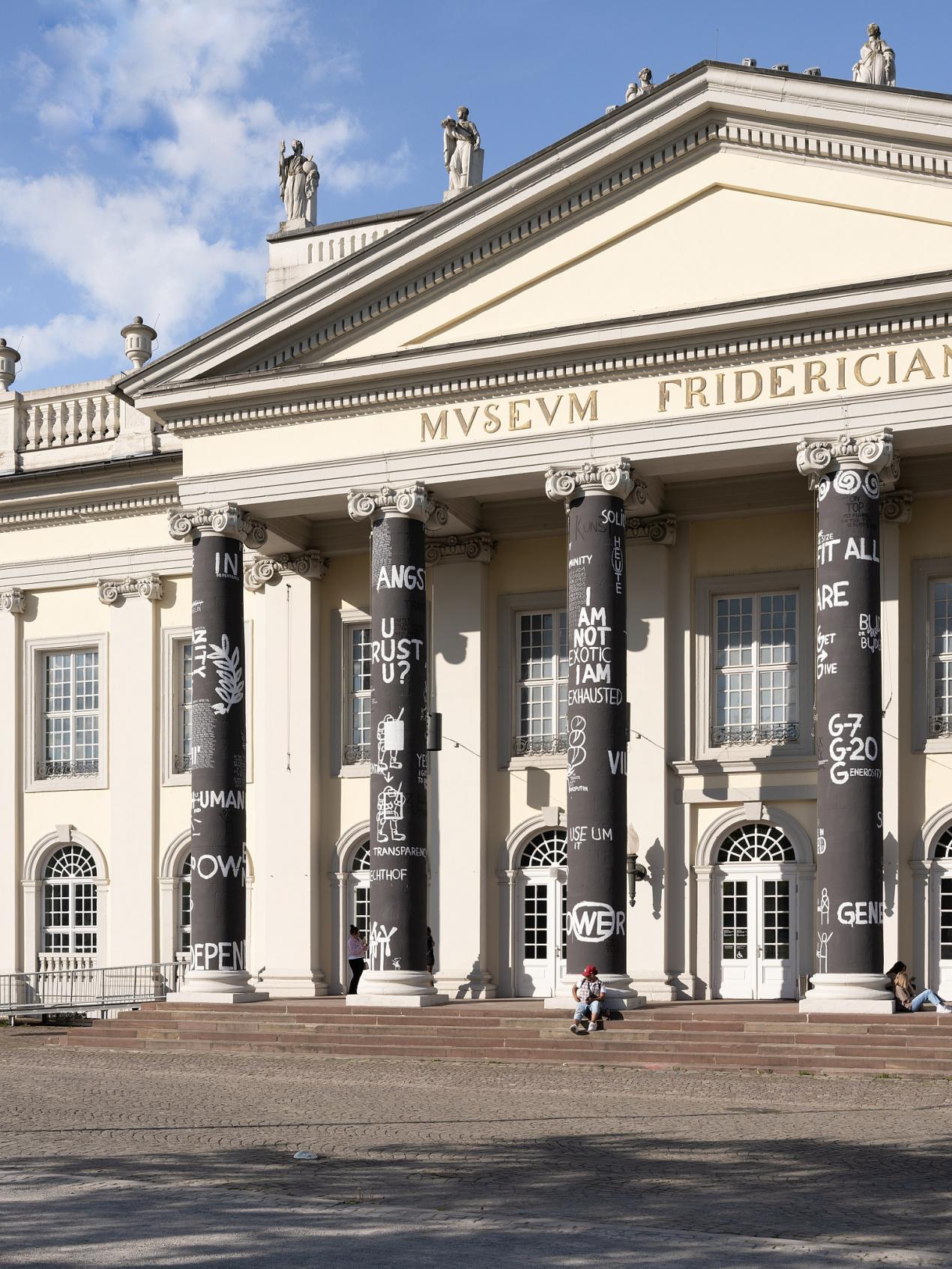
Fig.6: Dan Perjovschi, Generosity, Regeneration, Transparency, Independence, Sufficiency, Local Anchor and most of all Humor, Kassel, 2022, © Nicolas Wefers Source:https://documenta-fifteen.de/downloadbereich-lumbung-kuenstlerinnen/ (Accessed: 04.05.2023)
“And I think that in this documenta there are lots of spaces that they come [to] as counter-rituals, spaces where we don't know how to behave and we don't know what's going to happen and what we are supposed to do.”(ibid.)
Maybe that is why ruangrupa did not even intend to include dedicated art-mediators, who could mediate the crowds through designated parcours of documenta fifteen, and instead would have preferred for the artists to mediate their own work, on-site, over the span of the 100 days (farid rakun & V. Tabach, 2022). The tremendous Visa-issues of artists from countries of the global majority aside, ruangrupa’s approach did not respond to documenta´s tradition of having 80% of the tours offered in German. The W&S, just like the Walks (Orig. Spaziergänge) of documenta 14 and dTOURS of documenta 13 and art mediation (Kunstvermittlung) of documenta 12, are a product that generates financial In documenta fifteen 78,675 visitors took part in the "Walks & Stories", 26,270 of them as individual participants in mixed-groups. The standard ticket for a Walk & Story cost 15 euros and was not included in the exhibition ticket. Up to 15 participants would take part in each Walk & Story. For more information See: https://www.kubi-online.de/artikel/vermittlung-documenta-fifteen-reflexion-ueber-erwartungen-wirkungen-kunstvermittlung-basis as well as cultural capital. And although the curatorial concept of lumbung See Glossary documenta fifteen 2022 https://documenta-fifteen.de/glossar/ [10.10.2023] was rooted in trust, self-organisation and solidarity, documenta’s “[...] operating system has still somehow not fully changed. It is still exhibition-making.” (ebd.)
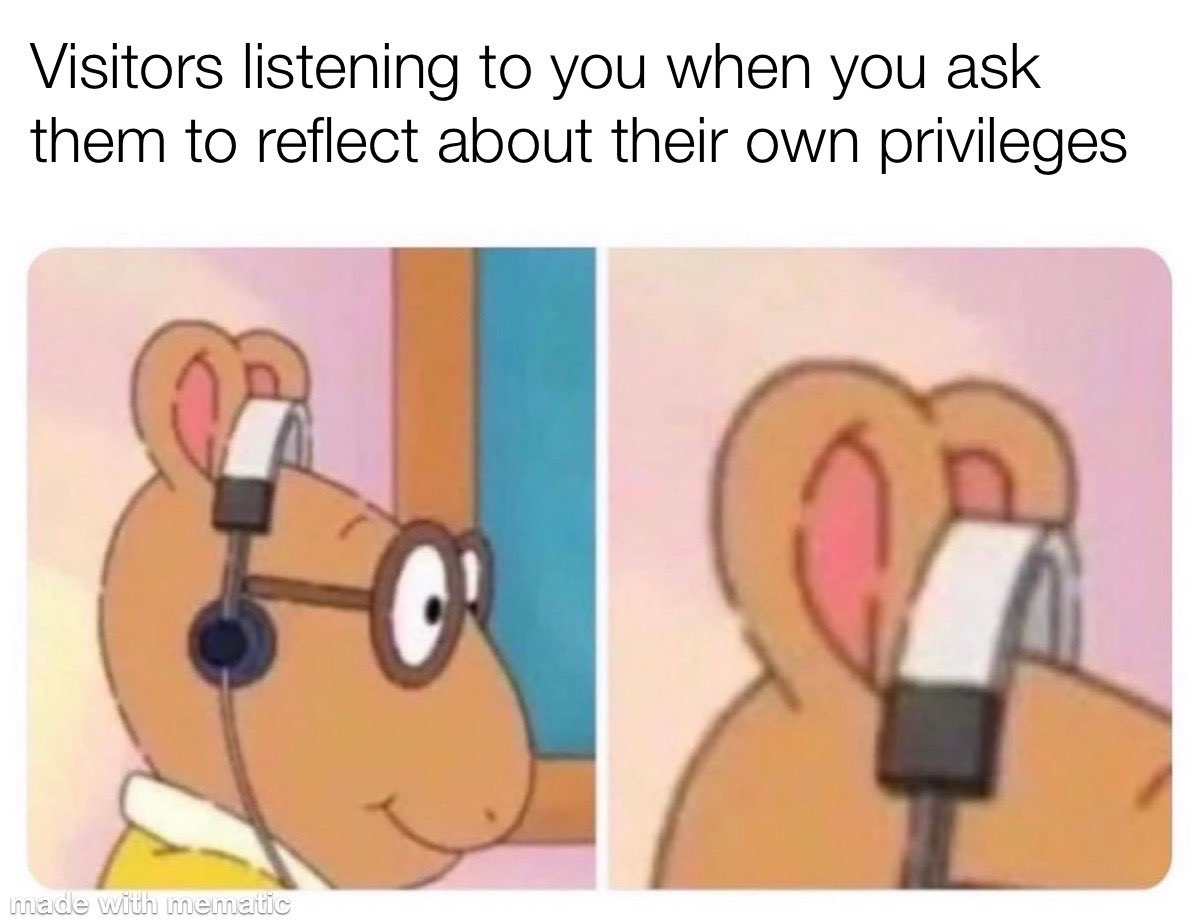
Fig. 7: Visitors (not) listening to you when you ask them to reflect about their own privileges, Meme, 2022, © Viviane Tabach
Critical whiteness requires time, homework and active listening. Having only a two-hour timeframe of paid-for-friendship The sobat-sobat were intended to be independent and self-organised art-mediators who,through friendship and storytelling would “[...]connect places, people, conditions, and experiences with each other and accompany through the exhibitions of documenta fifteen.(Walks and Stories, n.d.) Unfortunately due to the neo-liberal financial plan of documenta fifteen, the sobat-sobat activities were expected to prioritise guests that could afford them. See: “Sobat goes Digital but the institution does not make it accessible”(Tabach and Giardi in Efstathopoulos & Tabach (Ed.), 2022, p. 53) and “Soli-Walks”(Sarah Marcinkowski in Efstathopoulos & Tabach (Ed.), 2022, pp. 48–49) during the W&S with my mixed group of late-aged, middle-class German-folk, I focused on hosting dissent – on un-commoning - making the invisible things visible and questioning “the self-evidence of the visible” (Corcoran & Rancière, 2010, p. 154). In order to access lumbung and to take part in the commoning of things, I wanted specific participants of my W&S to realise for themselves the uncommon-grounds of documenta, and then, in the best case scenario, inspire them to do their homework by questioning the hegemony of Eurocentric narratives beyond the exhibition.
Take the back entrance: Quiet confrontations and ruptures
Back to our group that is getting a bit anxious to finally move on. After having spent one forth of their tour of Fridericianum outside of it, discussing the land rights of Aborigines and the aesthetics of tents at d15, one person expresses their desire to move on.
“That's what I´ve been waiting for! Thank you for communicating your desires with our group” I say to the group and continue by asking the rest of the group if they are also ready to go inside the museum. The majority nod their heads contently – some are just going along. All participants of my group are familiar with the Fridericianum in one way or another. In five-year intervals they have flocked here for its liturgy, the ritual of documenta.
But what they didn’t know was that the Fridericianum was now Fridskul ruangrupa’s curatorial decision seems to put into practice Luis Camnitzer’s site-specific installation A Museum is a School (2009). This conceptual art piece consists of the following text on the facade of a museum: “The Museum is a school; the Artist learns to communicate; The Public learns to make connections.”(Luis Camnitzer, n.d.) “Fridskul is Fridericianum as a School! During documenta fifteen, the Fridericianum becomes a repository for shared resources, such as knowledge, stories, and experiences. Artists activate the building with public workshops, seminars, and open formats of exchange. Fridskul is a neighbourhood: it creates a space for encounters.” https://documenta-fifteen.de/en/mediathek/what-is-fridskul/. The artists it housed were not making bold universal statements, but instead “learning to communicate” and that they (as the public) were invited to take part by “making connections”.
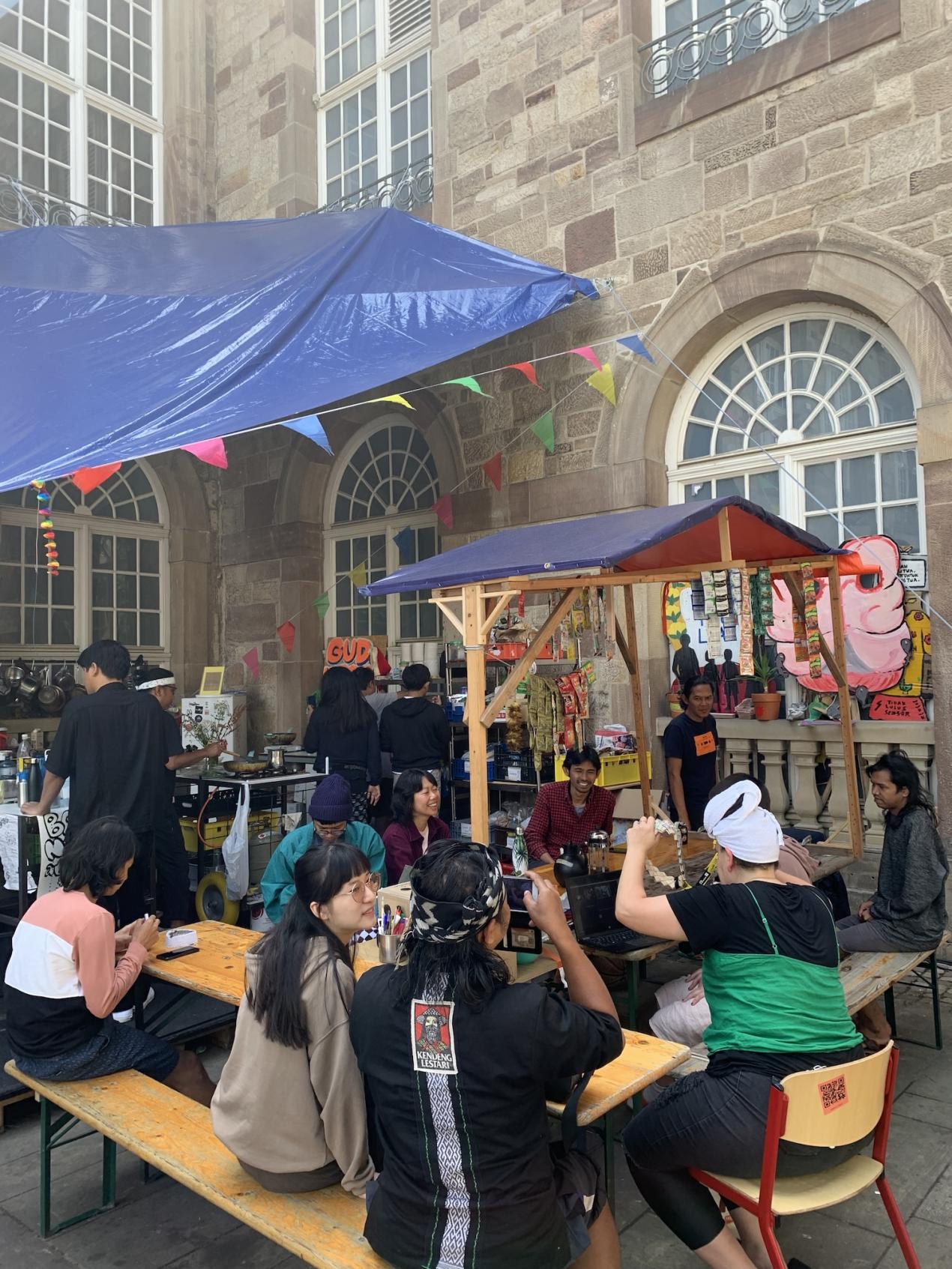
Fig. 8: Documentation of Gudkitchen during documenta fifteen, 2022, © Naomi Segal
I tell my group we are taking the back entrance into the Fridskul. We skip the long queues without the people queuing feeling like second-class visitors, and without my group feeling like first-class visitors, and we skip the expected sensationalism of a grand-entree-hall-experience that the museum is built around. Going through the back of the Fridskul also meant experiencing the collective kitchen-and-chill-out-and-event-space Gudkitchen “Gudkitchen is the heart of nongkrong: a place to hang out and make friends. Run by lumbung member Gudskul, it is the common kitchen for all inhabitants of the Fridericianum and a regular spot for karaoke, ping pong matches and self-made food.(Gudskul, n.d.) (Fig. 8), which gave us a chance to talk about the ritualised procedures within and around a museum. This was an opportunity to specify the pragmatic and logistical reasons for the curatorial decision of housing 50 artists inside the museum throughout the duration of documenta, titled Sekolah Temujalar (trans. Temujalar School) and the private/public Gudkitchen as an essential part of the Fridskul. Focusing on the auto-poetic nature of the space, I would try to interrupt the assimilation of Gudkitchen (Fig. 8) into the white canon of relational aesthetics.
Finally, we would enter the Fridericianum and go straight to the second-floor Doing 120 minute Walks & Stories with mixed groups of middle-aged and elderly people, I realised that a lot of people overestimate their walk and access ability. I learned that pointing out every elevator and taking the stairs downwards spares some of the group's energy. Elevators and staircases are a great way to mediate the building. “Through them, visitors explain the structure of the building, the possibilities it offers for viewing, and subsequently also their own path through the exhibition.[...]In addition to the possibility of locating themselves, my data point to another positive effect of the stairwells, namely that of free space. In this place, not only is there no art presentation, but also the norms of visiting the exhibition automatically loosen up for the visitors, for example, when they can speak louder or play here.”(Reitstätter, 2015, p. 137) balcony and have time to look around the half-circular architecture. I would point down to the ground-floor, to the Common Library (Fig. 9) of Fridskul, which was designed by the collective el Warcha See: https://www.elwarcha.org/about as one of the many multi-purpose-event-and-chill-out-spaces and thereby show the group where at the end of the Walk we would have more time to share our Stories.
There was a quiet and unspoken Ent-täuschung coming from the group at this point because some participants would have preferred “to see as many artistic positions as possible” in this 2000 square meter building. During the rest of the tour of Fridskul, we, a group of white-middle-class-people, would come to realise that many spaces in Fridskul Graziela Kunsch`s Public Daycare (2022) in the ground floor of the Fridericianum was open from 10 am to 5 pm, and was free of charge for babies aged 0 to 3 years and those responsible for them. During opening hours visitors without babies only had access to reading rooms and videos. (Graziela Kunsch, n.d.). RURUKIDS (2022) was a large room on the ground-floor “[...] with many fun and creative activities that encouraged [accompanied] children to explore arts and culture. It [was] a place for sharing knowledge, meeting new friends, playing, relaxing, and co-creating.” (RURUKIDS, n.d.) Another example of a space in Fridskul that was inaccessible to the general public were the large dormitories of the Gudskul residency on the ground-floor of the museum. were not accessible to us because they were not made for or from us. We, as white-middle-class-people of the global minority, were not the protagonists nor the target-audience of this “world-exhibition”.
The counter-rituals like the Embassy or the Gudkitchen of documenta fifteen did not (in most cases) directly confront the white-middle-class viewer by reaffirming a post-colonial discourse based on the binary of the colonised and colonisers Works like MADEYOULOOK’s mutli-medial installation in Hotel Hessenland is a great example, because it allowed the German and international public to be part of a process that is happening in South Africa, from a South African position, without alienating the German audience. This piece remained locally anchored in being produced for a South African audience and its context. I noticed the participants of my tours being affected in such a way that they felt they wanted to do some homework regarding the context of this piece. It is important that the audience is trusted and motivated to do its own work like this.. Instead, the intersectional cosmologies that were actually practised in Fridskul quietly disrupted hegemonic knowledge systems and in doing so, compelled participants to think and re-evaluate for themselves – to make connections. And although art mediators working at documenta exhibitions (especially since the 10th edition in 1997) have repeatedly challenged the assumption of expert guidance and frontal education in art mediation, my visitors-just like the visitors of documenta 12, fifteen years ago-were still expecting “[...] a service that would provide as much information as possible within the shortest viable timeframe, led by a gallery educator as unassailable, pleasant, and good-looking as possible.” (Redman in Gallo et al., 2017, p. 39).
An anticlimactic end to the Walk & Story: withstanding silence and giving homework
Our group finally makes it to the ground-floor. The Common Library is much louder than we expected. “The sitting arrangements of el Warcha are less comfortable than they looked like from above” says one elderly participant. We have spent the better part of the last hour discussing neurodiversity and inclusion in society (and to some degree in the arts) at the workshop/storage/exhibition space of Project Art Works and the group showed great interest in discussing the intersectional discrimination of Roma and Sinti people through the works curated by the OFF-Biennale in the 1st floor under the title RomaMoMA. I am positively surprised that this group, towards the end of the Walk, took their time and pointed out “contradictions” in the exhibition.
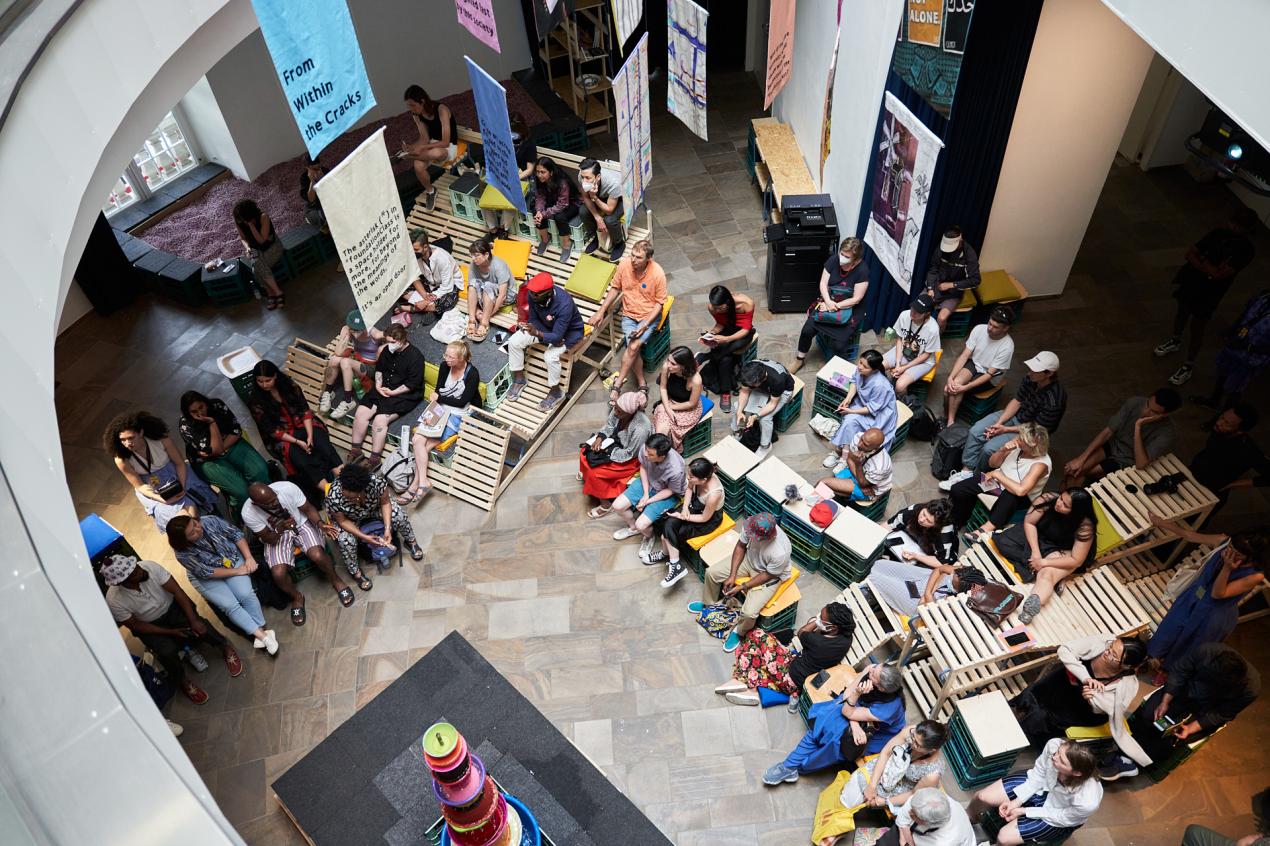
Fig. 9: Keleketla! Library, Asia Art Archive und The Black Archives conversing in the Fridskul Common Library, Kassel, 19. Juni 2022, © Nicolas Wefers, Source: https://documenta-fifteen.de/downloadbereich-allgemein/ Accessed: 03.05.2022
“The two-hour Walks & Stories has been much shorter than I expected” says the person who was so eager to go inside the Fridericianum at the start of the tour.
I look around, giving time for a response from the group. The participants look tired and thoughtful. I feel that they have little intention in sharing what's going on inside them. I am interested to know more about their process, but I don’t have the emotional strength right now to moderate a creative dialogical method for harvestingSee Glossary documenta fifteen 2022 https://documenta-fifteen.de/glossar/ [10.10.2023] their experience and impressions.
“Judging by the stillness of the group, it seems that we are processing the exhibition. That's great!” I comment.
I continue by framing the last minutes of our Walk & Story as a chance for more personal questions and opinions from the participants. I can tell that some participants are affected. For once in the tour, I provide the service that people thought they had paid for. For a brief moment, I am their encyclopedia, their forum of rumours, their voice-activated map. I can tell that my service-oriented-ending has come as a surprise.
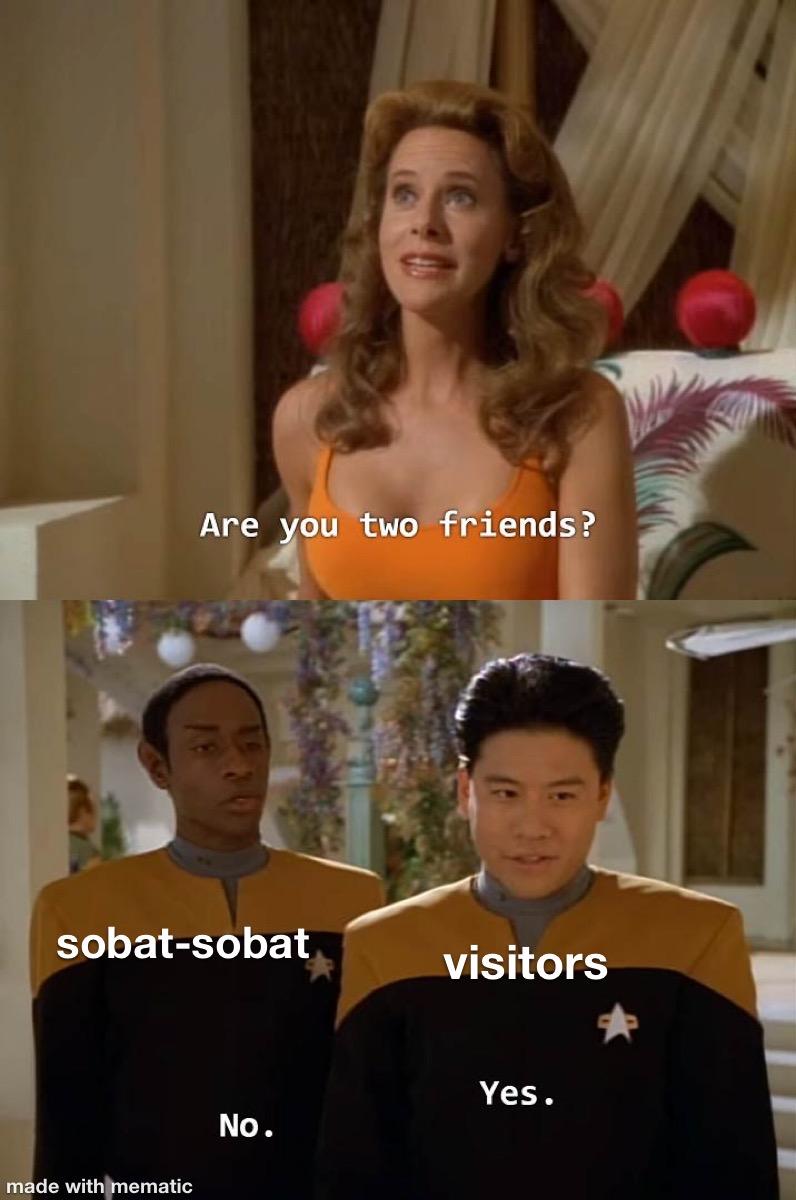
Fig. 10: “Are you two friends?”, Meme, documenta fifteen, 2022, © Viviane Tabach
There is no loud clapping and cheering at this point. I feel Ent-täuscht. I notice that a part of me would have enjoyed a confetti of clapping, cheering and tips from the participants. I am reminded of one of my colleague's remark regarding my vanity in measuring the success of a Walk through affirmative gestures like clapping and tipping. I wonder if I wasn't a good friend to them if they are not now clapping and cheering me. The group comes slowly and naturally apart. Some are investigating the correlation of symbols on the map of d15, looking for their next exhibition location, others are chit-chatting and making acquaintances with the people from the group. I have renounced the center of attention by moving to the sidelines and by rewriting the notes I made during the Walk.
I look up and see the person who had asked me “Where do you really come from?” at the start of our tour waiting for my attention. It seems that not-really-knowing “where I really come from” has kept them interested in my person. I am Ent-täuscht by this person's genuine interest in me and my own artistic practice. I apologise for being a bit abrupt to them at the start of the tour when they assumed it was necessary to know my place of birth. I explain to the person that it's not the first time nor the last time that I have been or will be asked this question and that in many cases it's a form of microaggression. The person apologises for not knowing. They want to know more about “microaggressions” and “critical whiteness”. I suggest to them the audiobook titled: exit RACISM: rassismuskritisch denken lernen by Tupoka Ogette as a good place to start. I then set some healthy boundaries by mentioning that the W&S is over and that I am “officially” on my unpaid lunch break.
Conclusion: stay with the trouble
“Even if the art educators working in the museums and other art exhibition institutions conceive of themselves and their higher mission differently, they are still part of the institution, which in turn must be seen as a complex agglomerate of discursive practices deeply penetrating the hegemonic imaginary of society as a whole. Guided tours or creative offerings, however active, designed for implementation with children and young people in exhibitions are first and foremost part of the hegemonic discourses and practices reproduced by the institution." (Marchart, 2022, p. 93)
The sobat-sobat had to notice and act in response to their privileged position within and outside of the meaning-making machine that an institution like the documenta and Fridericianum gGmbH is For more information on the internal struggles of the sobat-sobat concerning their position both within and outside the institution see Efstathopoulos & Tabach, 2022. For more information regarding documenta as a meaning-making machine see Marchart, 2022.. According to Maria do Mar Castro Varela and Nikita Dhawan, transforming the positionalities, privileges and gaze regimes of the public is only possible “[...] if those who take on the role of mediators understand themselves as part of the overall problem and also do not close themselves off to the role of also being learners.” (Henschel, 2020, p. 513) Translated by DeepL (Orig.: “Castro Varela und Dhawan stellen fest, dass eine Kunstvermittlung, die Positionalitäten wie auch Privilegien und Blickregime aufdecken, stören und – zumindest situativ – transformieren will, nur gelingen kann, “wenn diejenigen, die die Rolle der Vermittelnden übernehmen, sich als Teil des Gesamtproblems begreifen und sich zudem nicht der Rolle, auch Lernende zu sein, verschliessen’” (Henschel, 2020, p. 513).
In the case of d15, where the decolonisation of exhibition-making was anticipated from the get-go, it would have made sense to host public panel-discussions and offer regular moderated workshops during and before the exhibition where, amongst tackling other -isms of exhibition-making, critical whiteness could take place. By doing so, it would have lessened the emotional and educational work that sobat-sobat had to perform on a daily basis. When being confronted with the Ent-täuschung of visitors and being asked for my opinion, I would avoid any direct confrontation and suggest instead that visitors visit Joen Vedel and Yana Mikhalina’s Joen Vedel was part of the artist group “Jimmie Durham & A Stick in the Forest by the Side of the Road” that took on Jimmie Durham`s artistic position in the exhibition after his death in 2021. Durham did not expect the members of the collective – Bev Koski, Elisa Strinna, Hamza Badran, Iain Chambers, Joen Vedel, Jone Kvie, Maria Thereza Alves, and Wilma Lukatsch – to elaborate a single work or theme. Instead, they would share knowledge, empathy, and humour. On his last night, Durham said, “What a world we live in, a stick in the forest.” After his death, the collective decided to make his absence part of the working process.” (Jimmie Durham documenta fifteen TheArtists, n.d.) somewhat over-looked sound installation at the Kulturbahnhof of Kassel to look for answers. Titled “Tiñla alaysa, añlamasañ” (trans. If you don’t understand, listen), it consisted of an audio piece in which one person (a foreigner to the Tatar language) would struggle to learn one Tatar phrase each day and in this way the work was changing every day “Every day over the 100 days of the exhibition, I [Joen Vedel] have been learning a new phrase in Tatar with Yana´s grandmother and aunt over the phone. All phrases have been chosen for their everyday usefulness, poetic qualities, political relevance and particularities to Tatar culture” (Vedel & Yana, 2022).. Ever since encountering this piece I have come to use this phrase –– “If you don’t understand, then listen”–– as a mantra for my own personal decolonisation.
Over the course of d15, I came to realise that the Ent-täuschung of visitors was in fact taken into consideration by the curatorial concept. Even during the preparation weeks See Glossary documenta fifteen 2022 https://documenta-fifteen.de/glossar/ [10.10.2023] Frederikke “Fred” Hansen and farid rakun, members of the curatorial team who were more involved with the Education Department, warned the sobat-sobat, saying “visitors will come hungry, expecting bread, and we will serve them rice. It is our task [as sobat-sobat] to catch the unsatisfied expectation and to ensure that nobody goes home hungry” (Efstathopoulos & Tabach, 2022, p. 27). And although ruangrupa had expected the “hunger” of visitors for Art early on - and as a result forged an interdisciplinary working group titled Where is the art? to deal with the desired habit of visitors for finding, classifying and liking or disliking art - it was up to art mediators and untrained invigilators of the exhibition to answer the question(s): When is the art? Whose art is this? Why is this art? Where is the (anti-semitic) art?
As sobat Bella Baldermann points out Isabell Baldermann: Kunstvermittler*innen to be – Reflexionen zu Grundlagen, Framing und Methoden in der Ausbildung der sobat-sobat für die documenta fifteen, SFKP e Journal Art Education Research 25/2023 https://sfkp.ch/artikel/kunstvermittlerinnen-to-be, the Education Department of d15 missed the opportunity to develop a conceptual common ground; an explicit internal framing and contextualisation of what a decolonial art mediation could be, would have required and would have feel like. It appears that the lack of continuity between the Education Departments of each documenta exhibition has prolonged the naive idea that mediators could (and should) trigger such profound transformations with their guests and be able to withstand the ensuing whiplash of insecurities and (micro-) aggressions.
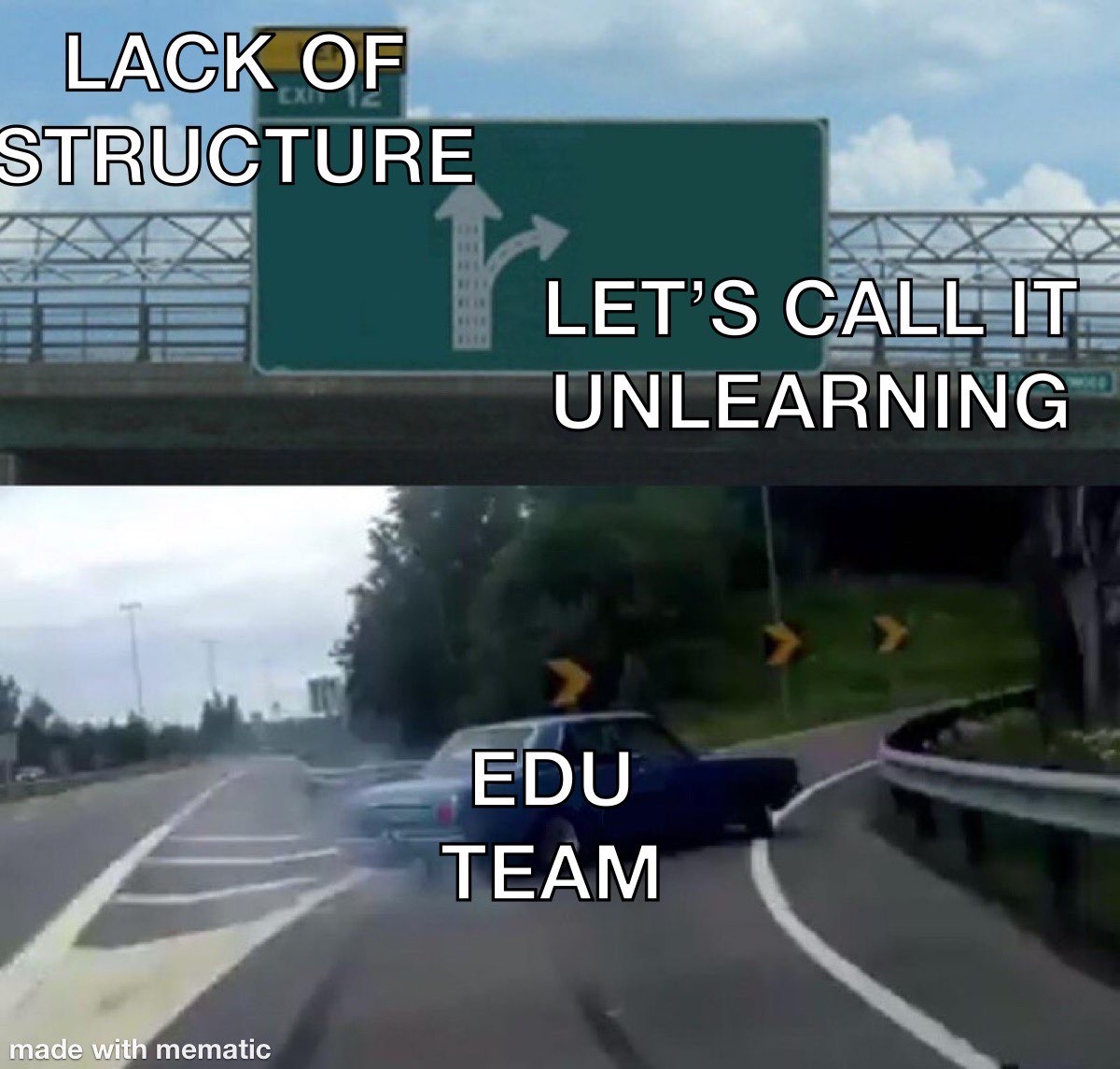
Fig. 11: “LET’S CALL IT UNLEARNING”, Meme, documenta fifteen, 2022, © Viviane Tabach
The Do-It-Yourself attitude of the Education Department of d15 in regards to its employees (sobat-sobat) justified, amongst other things, not providing enough training or tools specifically for reflecting and responding to the whiteness of documenta gGmbH - and by extension the Education Department – of which we sobat-sobat were an integral part of, as well as the whiteness of the public which we would encounter on our W&S. It was left up to the sobat-sobat to individually come up with ways to deal with the fragility of white guests that were quietly confronted with other cosmologies of the global majority.
I am thankful to all the artists, collectives and workers of d15 who caused Ent-täuschung. I am thankful to the artists, collectives and workers that withstood the Ent-täuschung, fragility and microaggressions of the public (before, during and after the 100 day exhibition) and in doing so (consciously and unconsciously) stayed with the troubles of decolonial exhibition making.
Literature
Bal-Blanc, Pierre (2017): Marta Minujín – documenta14. https://www.documenta14.de/en/artists/1063/marta-minujin [15.03.2023].
Bezirksamt Pankow von Berlin (o.J.): Die Geschichte Pankows. https://www.berlin.de/ba-pankow/ueber-den-bezirk/historisches/ [15.04.2023].
Deitelhoff, Nicole/Ackermann, Marion/Bernstein, Julia/Jelavich, Peter/Möllers, Christoph/Schmelzle, Cord (2023): Abschlussbericht. Gremium zur fachwissenschaftlichen Begleitung der documenta fifteen. https://www.documenta.de/files/230202_Abschlussbericht.pdf [12.08.2023].
documenta 14 (2017): The Parthenon of Books: Redistribution of Forbidden Books. https://www.documenta14.de/en/calendar/25115/the-parthenon-of-books-redistribution-of-forbidden-books [15.03.2023].
documenta fifteen (2022a): Graziela Kunsch. https://documenta-fifteen.de/lumbung-member-kuenstlerinnen/graziela-kunsch/ [01.05.2023].
documenta fifteen (2022b): Gudskul: Gudkitchen. https://documenta-fifteen.de/mediathek/gudskul-gudkitchen/ [03.04.2023].
documenta fifteen (2022c): Jimmie Durham & A Stick in the Forest by the Side of the Road. https://documenta-fifteen.de/lumbung-member-kuenstlerinnen/jimmie-durham/ [19.04.2023]
documenta fifteen (2022d): RURUKIDS. https://documenta-fifteen.de/rurukids/ [19.03.2023]
documenta fifteen (2022e): Walks and Stories. https://documenta-fifteen.de/walks-and-stories/ [19.04.2023].
documenta fifteen (2022f): Was ist Fridskul? https://documenta-fifteen.de/mediathek/was-ist-fridskul/ [12.08.2023]
documenta fifteen (24.06.2022g): Statement by Taring Padi on Dismantling “People’s Justice”.https://documenta-fifteen.de/news/statement-von-taring-padi-zum-abbau-des-banners-peoples-justice/ [12.08.2023]
documenta fifteen (25.05.2022h): Harvester und das Sammeln von Harvests bei der documenta fifteen. https://documenta-fifteen.de/news/harvester-und-das-sammeln-von-harvests-bei-der-documenta-fifteen/ [12.08.2023]
Doerry, Martin (2017): Ein Spaziergang über die missratene Documenta 14 in Kassel. Spiegel Online. https://www.spiegel.de/spiegel/ein-spaziergang-ueber-die-missratene-documenta-14-in-kassel-a-1159482.html [12.08.2023]
Duncan, Carol (1995): Civilizing Rituals. Inside Public Art Museums. London, Routledge.
Efstathopoulos, Thesea/ Tabach, Viviane (Hg.) (2022): Ever been friend-zoned by an institution? Kassel, lumbung press. https://drive.google.com/file/d/1OsG0dxXd3bB4uoYGH4VOaTeA6pU818Di/view [12.08.2023]
Efstathopoulos, Thesea/ Tabach, Viviane (18/09/2022): Kick-Start Of The Day. Öffentliches Gespräch in Ruruhaus. 43:25 Min https://drive.google.com/file/d/1SPAYQRdTiXTSdfaQWQ6xUtKAlcUjm0EY/view?usp=sharing
Efstathopoulos, Theseas: Kick-Start of the Day. In: Efstathopoulos, Thesea/ Tabach, Viviane (2022): Ever been friend-zoned by an institution? Kassel, lumbung press.
Frick, Marc (2021): Die Gabe als drittes Prinzip zwischen Markt und Staat? Perspektiven von Marcel Mauss bis zur Gegenwart. Bielefeld, transcript.
Gallo Max, Jurisch Hanna, Koh Yul, Petrik Jeanmette, Ritzel Erik, Spillmann Peter, & Sprich, Verena (Hg.) (2017): Dating the Chorus (Vol. 2). Kassel, selbst-publiziert.
Giardi, Chiara/Tabach, Viviane: Sobat goes Digital but the institution doesn’t make it accessible. In: Efstathopoulos, Thesea /Tabach, Viviane (Eds.). (2022): Ever been friend-zoned by an institution? Kassel, lumbung press.
Haraway, Donna (2016): Staying with the Trouble. Making Kin in the Chthulucene. Durham/London, Duke University Press.
Henschel, Alexander (2020): Was heisst hier Vermittlung? Kunstvermittlung und ihr umstrittener Begriff. Wien, Zagalossus.
Hochschule für bildende Künste Hamburg (2022): Symposium: Kontroverse documenta fifteen. https://hfbk-hamburg.de/de/stories/symposium-kontroverse-documenta-fifteen/ [12.08.2023].
Institute for Contemporary Art (2022): Luis Camnitzer: A Museum is a School. https://icavcu.org/exhibitions/a-museum-is-a-school/#overview [03.04.2023].
Krzistetzko, Leoni (2022): documenta 15: Walks & Stories setzen auf Interaktion und Gespräche. https://www.hna.de/kultur/documenta/documenta-15-walks-stories-setzen-auf-interaktion-und-gespraeche-91693485.html [12.08.2023].
Lorch, Catrin (19.07.2012): Occupy-Aktivisten auf der Documenta. https://www.sueddeutsche.de/kultur/occupy-aktivisten-auf-der-documenta-malerisches-bild-des-widerstands-1.1408081 [12.08.2023].
Mandel, Birgit (2023): Vermittlung auf der documenta fifteen-Reflexion über Erwartungen und Wirkungen von Kunstvermittlung aud der Basis einer Besucher*innen-Befragung. In: KULTURELLE BILDUNG ONLINE. https://www.kubi-online.de/artikel/vermittlung-documenta-fifteen-reflexion-ueber-erwartungen-wirkungen-kunstvermittlung-basis [12.08.2023]
Marchart, Oliver (2022): Hegemony Machines. Documenta X to fifteen and the Politics of Biennalization (Vol. 2). Berlin/Zürich, n.b.k./OnCurating.org.
Marcinkowski, Sarah: Critical Friends. In: Efstathopoulos, Thesea/Tabach, Viviane (Hg.) (2022): Ever been friend-zoned by an institution? Lumbung Press.
Micossé-Aikins, Sandrine (2011): Kunst. In: Arndt, Susan/Ofuatey-Alazard, Nadja (Hg.), Wie Rassismus aus Wörtern spricht. (K)Erben des Kolonialismus im Wissensarchiv deutsche Sprache: ein kritisches Nachschlagewerk. München, UNRAST.
Mörsch, Carmen (2019): Die Bildung der A_n_d_e_r_e_n durch Kunst: Eine postkoloniale und feministische historische Kartierung der Kunstvermittlung. Wien, zaglossus.
Ogette, Tupoka (ab 2020): EXIT RACISM: Das Handbuch von Tupoka Ogette, um die Entstehung, Strukturen und Wirkungsweisen von Rassismus in Deutschland zu verstehen. https://www.exitracism.de/index.html [12.08.2023]
O´Sullivan, Simon (2006): Art encounters Deleuze and Guattari. Thought beyond representation. New York, Palgrave Macmillan.
Rakun, Farid/Tabach, Viviane: The Risk of Doing Things on Surface Levels, Without the Cosmologies. In: Efstathopoulos, Thesea /Tabach, Viviane (Eds.). (2022): Ever been friend-zoned by an institution? Kassel, lumbung press.
Rancière, Jacques (2010): DISSENSUS. On Politics and Aesthetics. London/New York, Continuum International.
Reitstätter, Luise (2015): Die Ausstellung verhandeln. Von Interaktionen im musealen Raum. Bielefeld, transcript.
ruangrupa, Sternfeld N. (2021): SHARING SURPLUS VALUE AS A FORM OF COLLECTIVITY / ruangrupa in Conversation with Nora Sternfeld. In: TEXTE ZUR KUNST, No.124
Sato, Hansel (2009): Performing Essentialismus auf der documenta 12. In: Mörsch, Carmen/Forschungsteam der documenta 12 Vermittlung (Hg.), Kunstvermittlung II: Zwischen kritischer Praxis und Dienstleistung auf der documenta 12: Ergebnisse eines Forschungsprojekts. Zürich/Berlin, diaphanes.
Selim Amir (2022): Interviewreihe „Kick—Start of the day” findet jeden Vormittag im Ruruhaus statt.
Shafaieh C. (2022): Shahidul Alam on the Majority World. Harvard Design Magazine 50/2022. http://www.harvarddesignmagazine.org/articles/shahidul-alam-on-the-majority-world/ [15.03.2023].
Steinke, Antonin: Stretching in Water: Lockerungsübungen für die documenta. In: Efstathopoulos, Thesea/Tabach, Viviane (Hg.). (2022): Ever been friend-zoned by an institution? Kassel, lumbung press.
Vedel, Joen / Yaniya, Mikhalina (2022): The Struggle Starts with the Struggle of the Tongue. An Affective Dictionary of Tatar. Köln, Walther König.
Weiner, Andrew Stefan (14.08.2017): The Art of the Possible. With and Against documenta 14. Biennial Foundation. https://biennialfoundation.org/2017/08/art-possible-documenta-14/ [19.04.2023].
Zentralrat der Juden (28.07.2022)a: PRESSEERKLÄRUNG ZUR DOCUMENTA. https://www.zentralratderjuden.de/aktuelle-meldung/artikel/news/presseerklaerung-zur-documenta/ [12.08.2023].
Zentralrat der Juden (12.09.2022)b: PRESSEERKLÄRUNG ZUR ERKLÄRUNG DES EXPERTENGREMIUMS DER DOCUMENTA. https://www.zentralratderjuden.de/aktuelle-meldung/presserklaerung-zur-erklaerung-des-expertengremiums-der-documenta/ [12.08.2023]